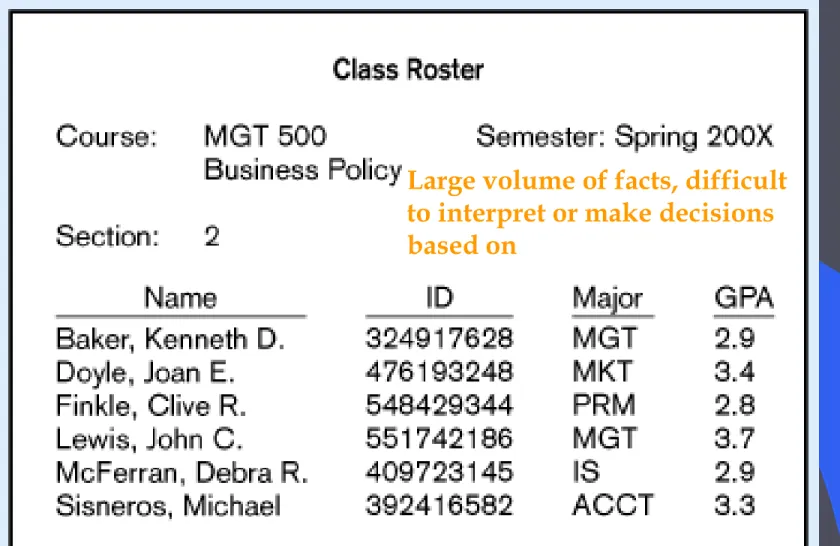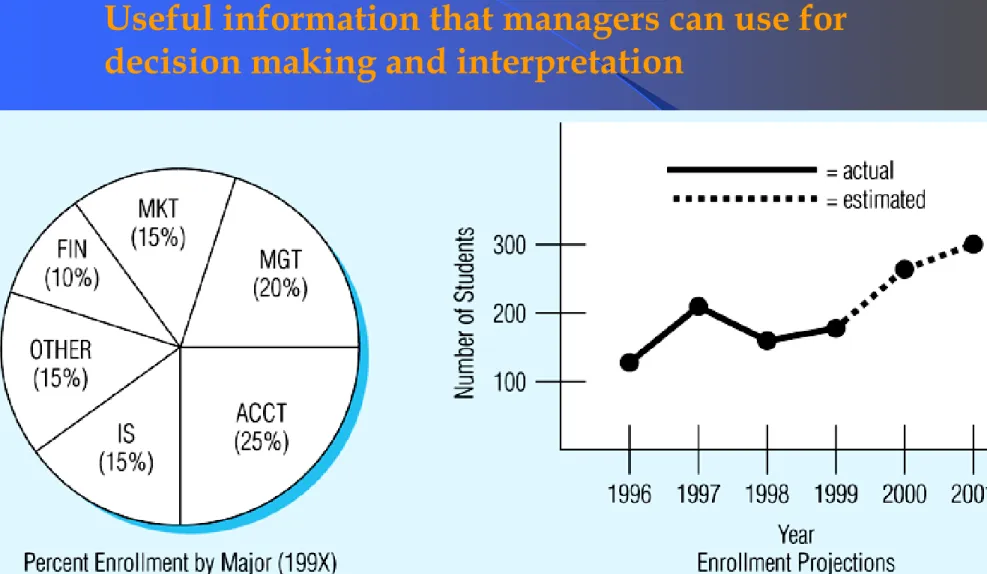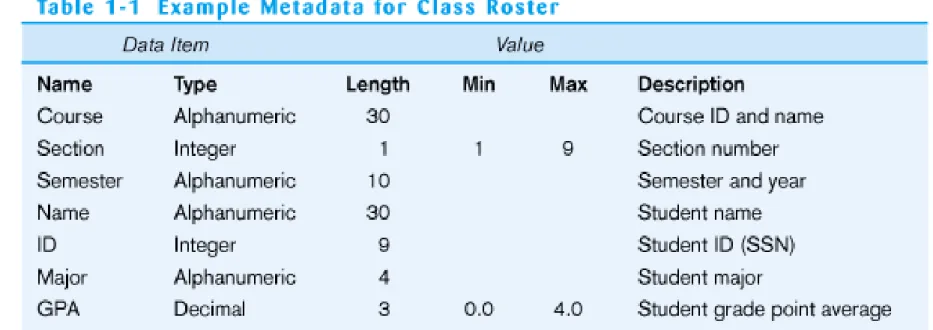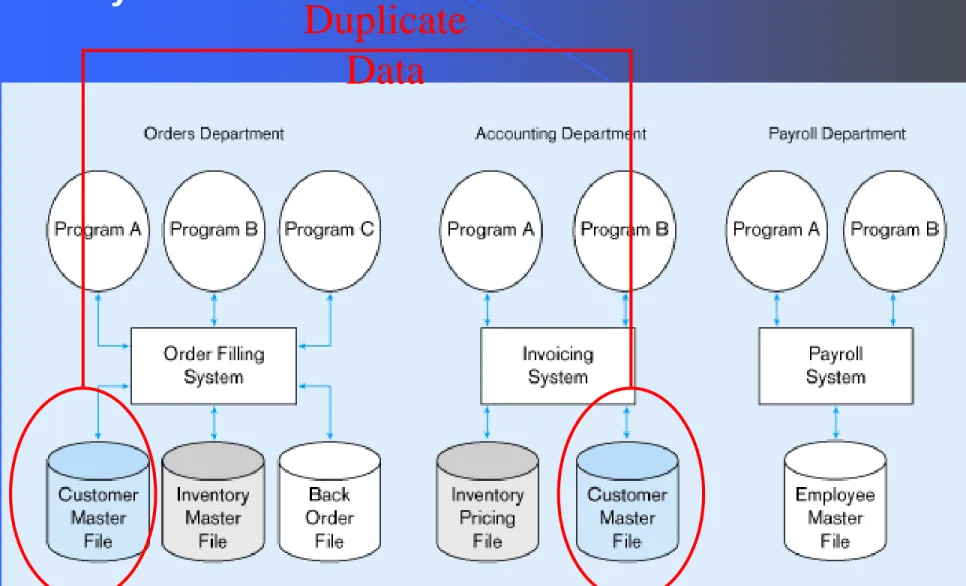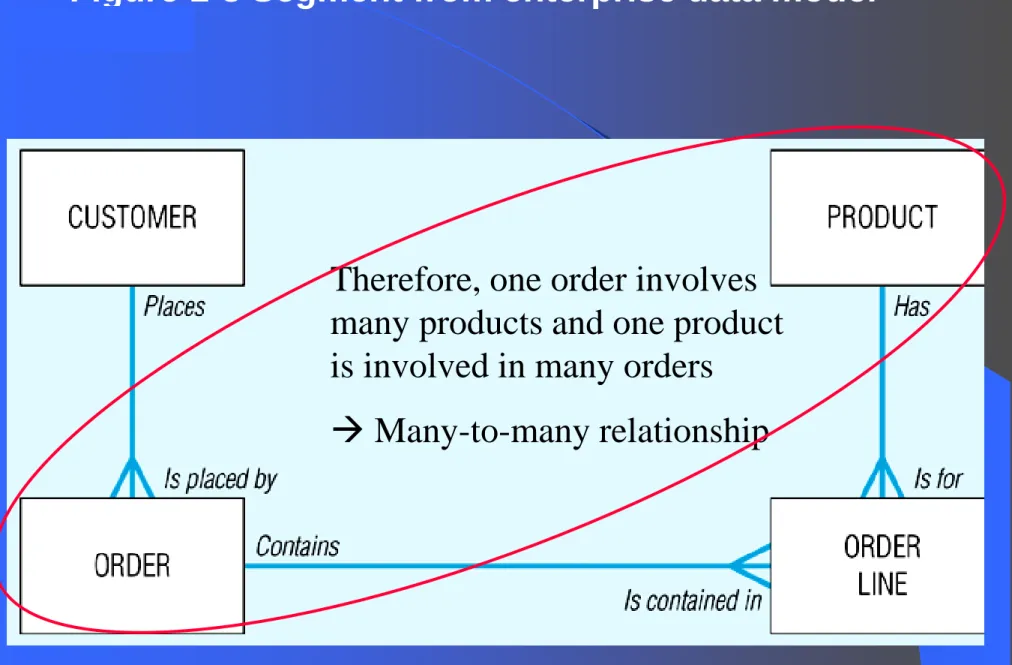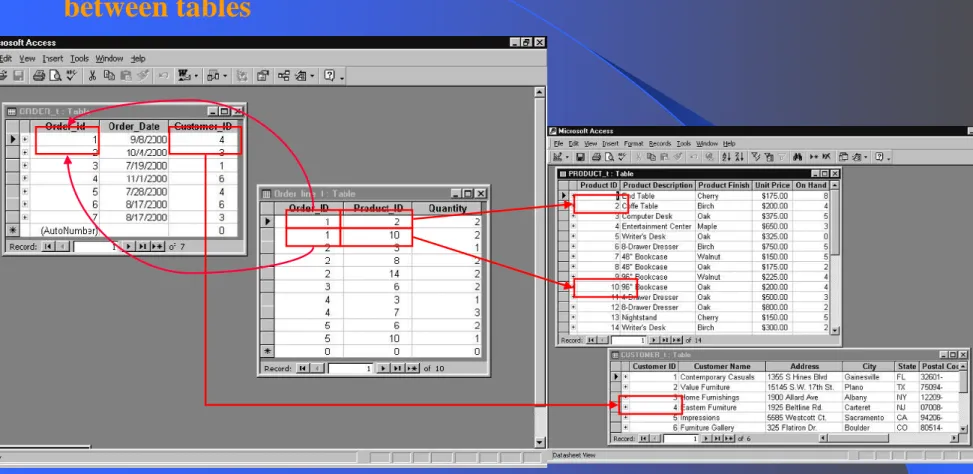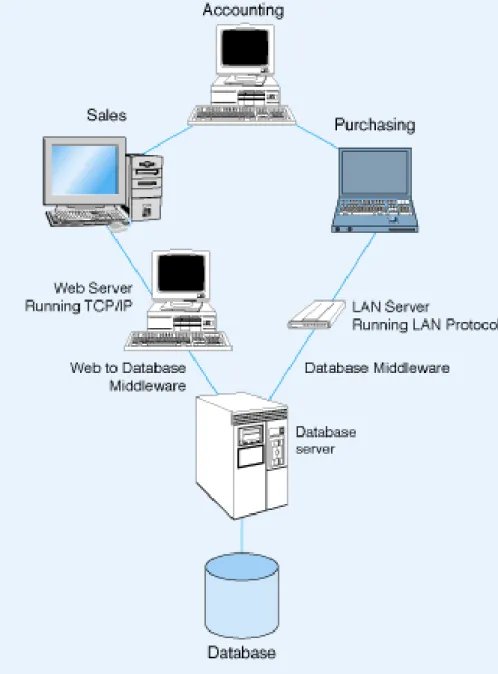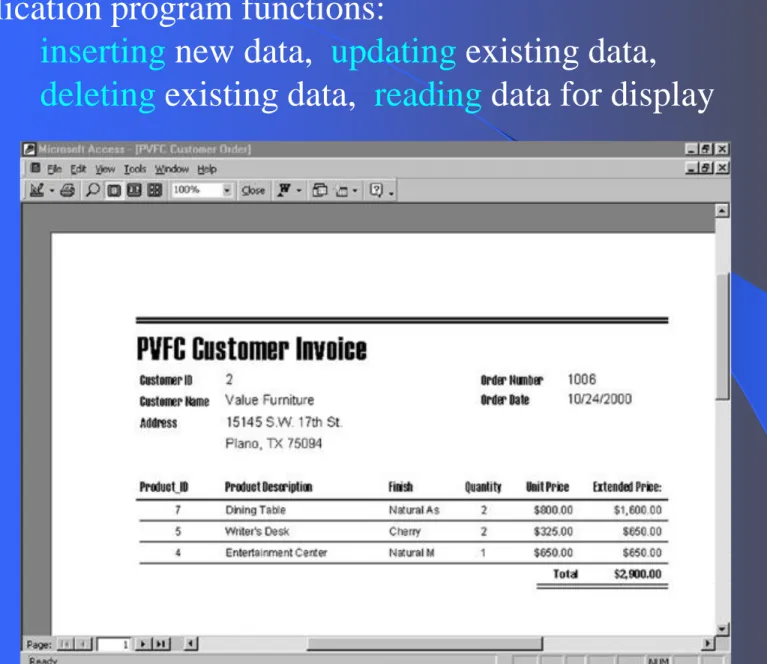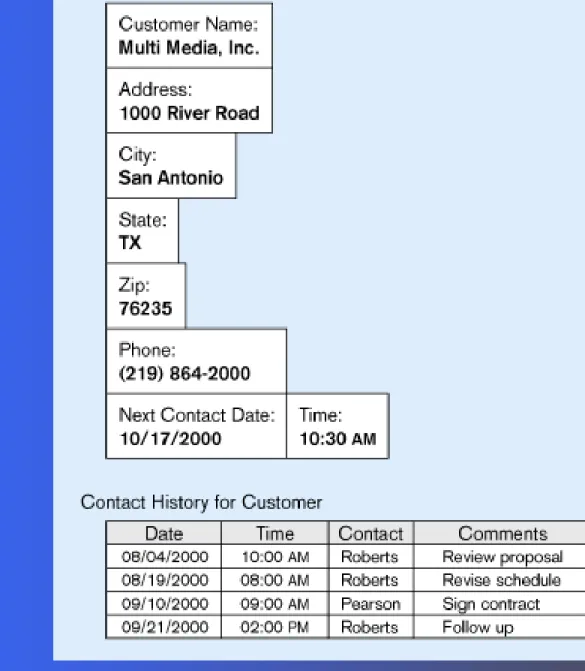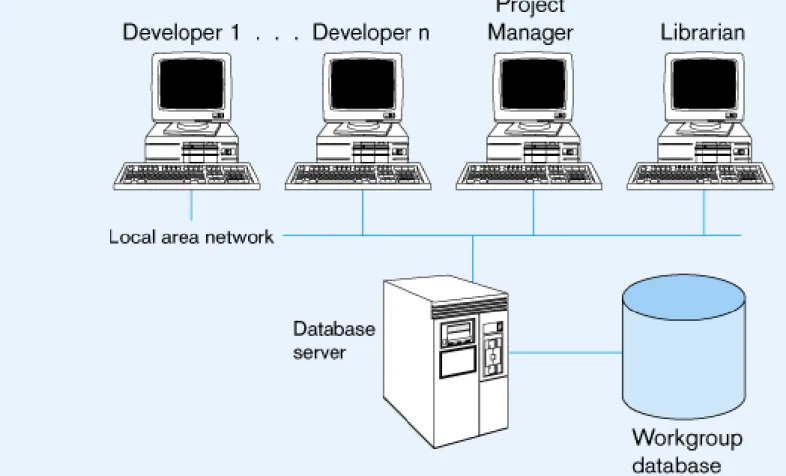Chapter 1:
The Database Environment
Modern Database Management 6
thEdition
Jeffrey A. Hoffer, Mary B. Prescott, Fred R.
McFadden
Definitions
Data: Meaningful facts, text, graphics, images, sound, video segments
Database: An organized collection of logically related data
Information: Data processed to be useful in decision making
Metadata: Data that describes data
Figure 1-1a Data in Context
Large volume of facts, difficult to interpret or make decisions based on
Figure 1-1b Summarized data
Useful information that managers can use for decision making and interpretation
Table 1-1 Metadata
Descriptions of the properties or characteristics of the data, including data types, field sizes, allowable
values, and documentation
Disadvantages of File Processing
Program-Data Dependence
– All programs maintain metadata for each file they use
Data Redundancy (Duplication of data)
– Different systems/programs have separate copies of the same data
Limited Data Sharing
– No centralized control of data
Lengthy Development Times
– Programmers must design their own file formats
Excessive Program Maintenance
Figure 1-2 Three file processing systems at Pine Valley Furniture
Duplicate Data
Problems with Data Dependency
Each application programmer must maintain their own data
Each application program needs to include code for the metadata of each file
Each application program must have its own
processing routines for reading, inserting, updating and deleting data
Lack of coordination and central control
Non-standard file formats
Problems with Data Redundancy
Waste of space to have duplicate data
Causes more maintenance headaches
The biggest Problem:
–
When data changes in one file, could cause inconsistencies
–
Compromises data integrity
SOLUTION:
The DATABASE Approach
Central repository of shared data
Data is managed by a controlling agent
Stored in a standardized, convenient form
Requires a Database Management System (DBMS)
Database Management System
A DBMS is a data storage and retrieval
system which permits data to be stored non-
redundantly while making it appear to the
user as if the data is well-integrated.
Database Management System
DBMS manages data
resources like an operating system manages hardware resources
DBMS
containingDatabasecentralized shared data
Application
#1
Application
#2
Application
#3
Advantages of Database Approach
Program-Data Independence
– Metadata stored in DBMS, so applications don’t need to worry about data formats
– Data queries/updates managed by DBMS so programs don’t need to process data access routines
– Results in: increased application development and maintenance productivity
Minimal Data Redundancy
– Leads to increased data integrity/consistency
Advantages of Database Approach
Improved Data Sharing
– Different users get different views of the data
Enforcement of Standards
– All data access is done in the same way
Improved Data Quality
– Constraints, data validation rules
Better Data Accessibility/ Responsiveness
– Use of standard data query language (SQL)
Security, Backup/Recovery, Concurrency
Costs and Risks of the Database Approach
Up-front costs:
– Installation Management Cost and Complexity
– Conversion Costs
Ongoing Costs
– Requires New, Specialized Personnel
– Need for Explicit Backup and Recovery
Organizational Conflict
– Old habits die hard
Figure 3
Figure 1-3 Segment from enterprise data model
Figure 3
Figure 1-3 Segment from enterprise data model
One customer may place many orders, but each order is placed by a single customer
One-to-many relationship
Figure 3
Figure 1-3 Segment from enterprise data model
One order has many order lines; each order line is
associated with a single order
One-to-many relationship
Figure 3
Figure 1-3 Segment from enterprise data model
One product can be in many
order lines, each order line refers to a single product
One-to-many relationship
Figure 3Figure 1-3 Segment from enterprise data model
Therefore, one order involves many products and one product is involved in many orders
Many-to-many relationship
Figure 1-4 Order, Order_Line, Customer, and Product tables
Relationships established in special columns that provide links between tables
Figure 1-5 Client/server system for Pine Valley Furniture Company
Figure 1-6 Customer invoice (Pine Valley Furniture Company) Application program functions:
inserting new data, updating existing data, deleting existing data, reading data for display
The Range of
Database Applications
Personal Database – standalone desktop database
Workgroup Database – local area network (<25 users)
Department Database – local area network (25-100 users)
Enterprise Database – wide-area network (hundreds or thousands of users)
1. ERP (current data): ex. Scheduling staff & services across all units
2. DWH (historical data): identify patterns & trends for
Figure 1-7 Typical data from a
personal computer database
Figure 1-8 Workgroup database with local area network
Figure 1-9 An enterprise
data
warehouse
Components of the Database Environment
CASE Tools – computer-aided software engineering
Repository – centralized storehouse of metadata
Database Management System (DBMS) – software for managing the database
Database – storehouse of the data
Application Programs – software using the data
User Interface – text and graphical displays to users
Data Administrators – personnel responsible for maintaining the database
System Developers – personnel responsible for designing databases and software
Figure 1-10 Components of the
database environment
Evolution of DB Systems
Flat files - 1960s - 1980s
Hierarchical – 1970s - 1990s
Network – 1970s - 1990s
Relational – 1980s - present
Object-oriented – 1990s - present
Object-relational – 1990s - present
Data warehousing – 1980s - present
Web-enabled – 1990s - present
